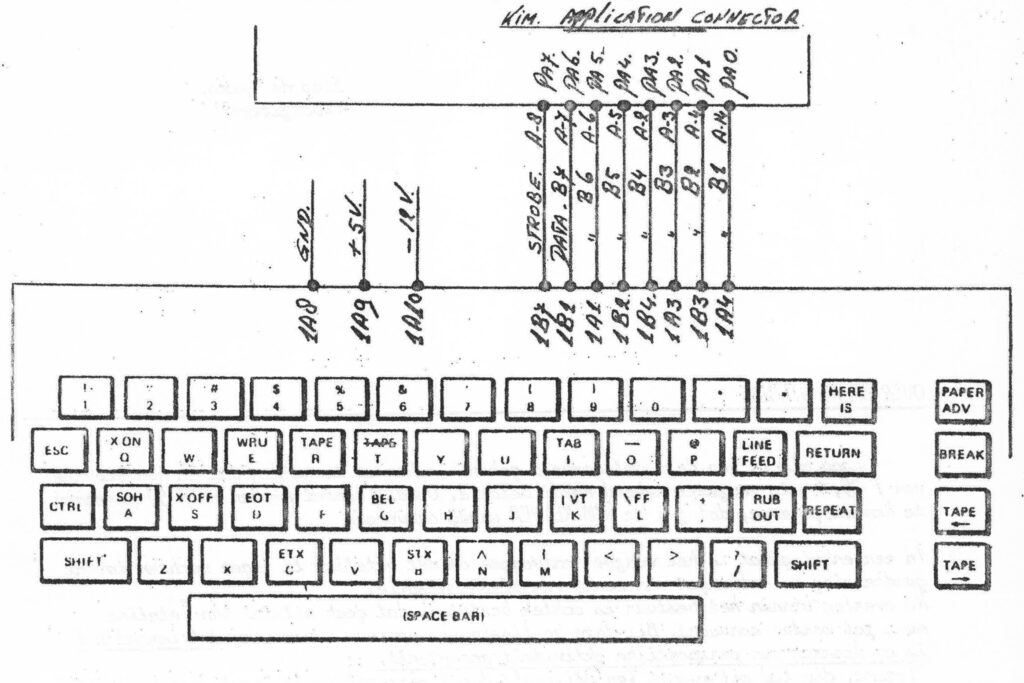 Kenner 2 page 4 July 1977 Co Filmer, translated to english Hans Otten, 2021
Kenner 2 page 4 July 1977 Co Filmer, translated to english Hans Otten, 2021
A parallel ASCII keyboard is a nice addition to the KIM-1.
Connect to the PIA A of the KIM-1 on the Application connector.
Some keyboards may require a -12 V power supply.
The address 1700 now shows the ASCII keyboard code of (the last) key pressed. The high bit (PB7) is the strobe signal, the other 7 bits the ASCII code.
A program should poll the strobe bit, if activated wait for the strobe bit to be deactivated, and then read the key and return.
Testing for keypressed such as a break test means checking the strobe bit, if activated stop processing, etc..
Code fragments by Hans Otten
PAD * $1700 ; BREAKKEY IN BIT 7 ; SUBROUTINE GET CHARACTER ; GETCH BIT PAD ; PROCEDURE GETCHARACTER ( CHAR ) BPL GETCH ; WAIT FOR STROBE GWAIT BIT PAD ; WAIT FOR END OF STROBE BMI GWAIT ; LDA PAD ; GET CHARACTER RTS ; END GETCHARACTER ; ; example of break test ; SYN BIT PAD ; REPEAT BPL GOON ; WHILE NOT keypressed JMP MONRET ; GOON continue processing
See also:
RC6502, an Apple 1 clone
On this page my experiences with an Apple 1 clone, my third! Build as kit, a nice experience and another 6502 system in ...
Elektor Junior ASSM/TED
MAE ASSM/TED for the Elektor Junior
Adapted version for the Junior of the KIM-1 MAE. Adaptations from the KIM User Cl...
KIM-1 Macro Assembler Editor
I bought MAE in 1980 for Use Schroder, Ingenieur bureau Schroder, as a package for the KIM-1. As did some friends in the...
MAE ASSM/TED CW Moser
MAE (Macro Assembler Text Editor) or ASSM/TED is a program sold by Eastern House Software for the KIM-1, Apple, PET, C64...
